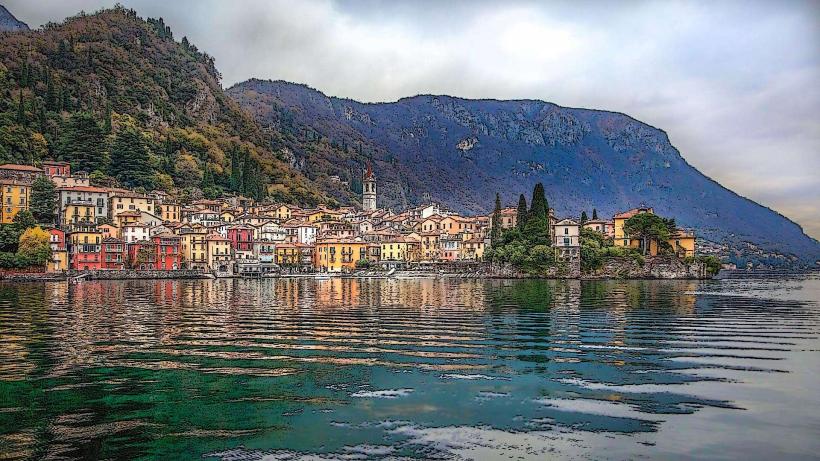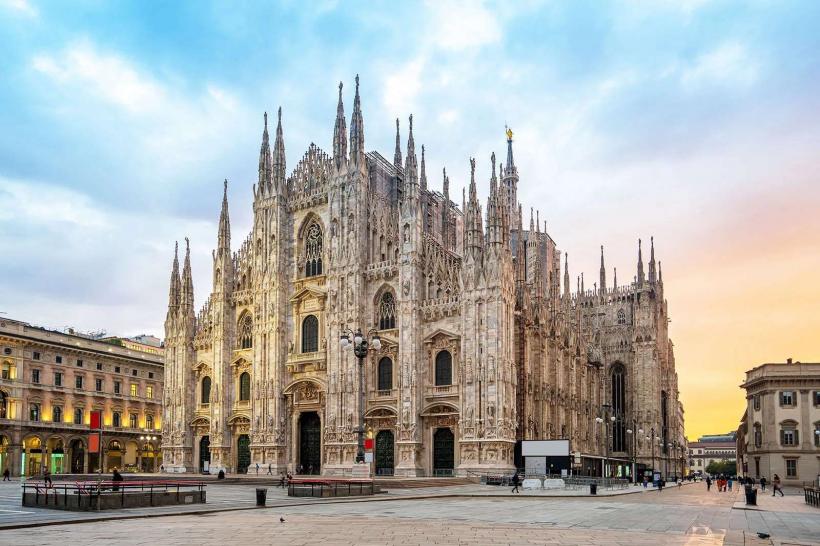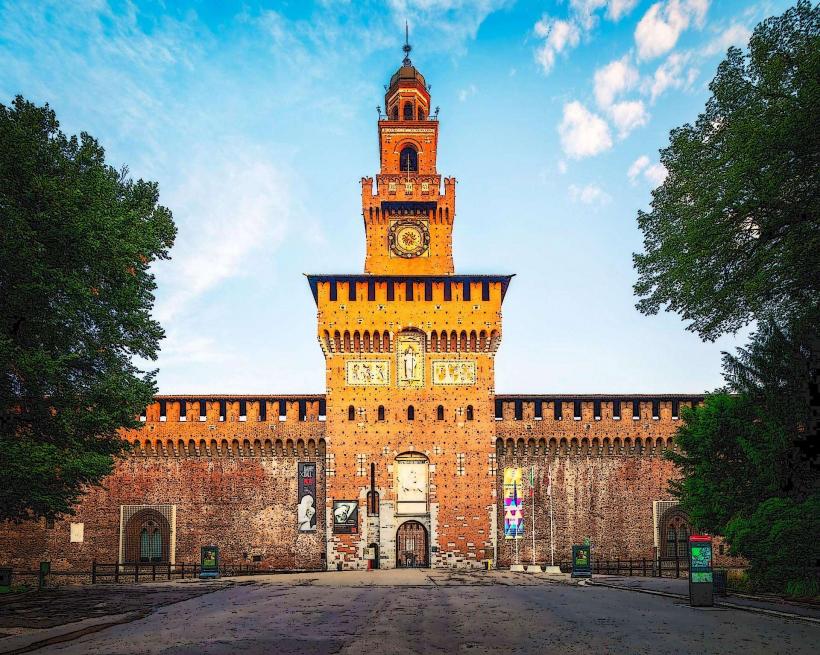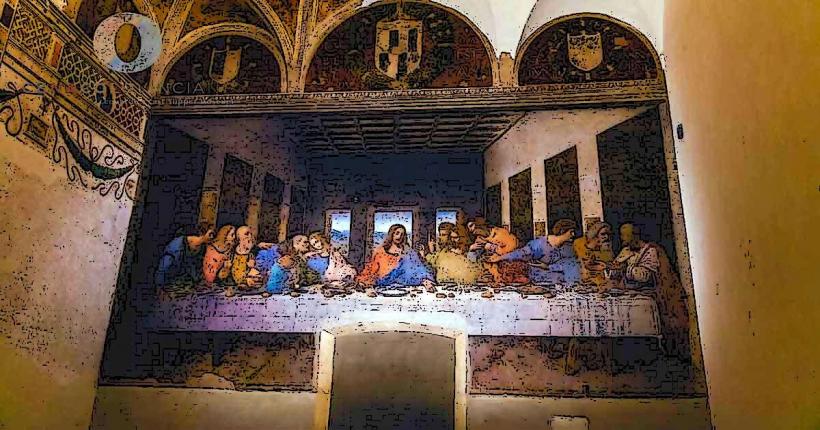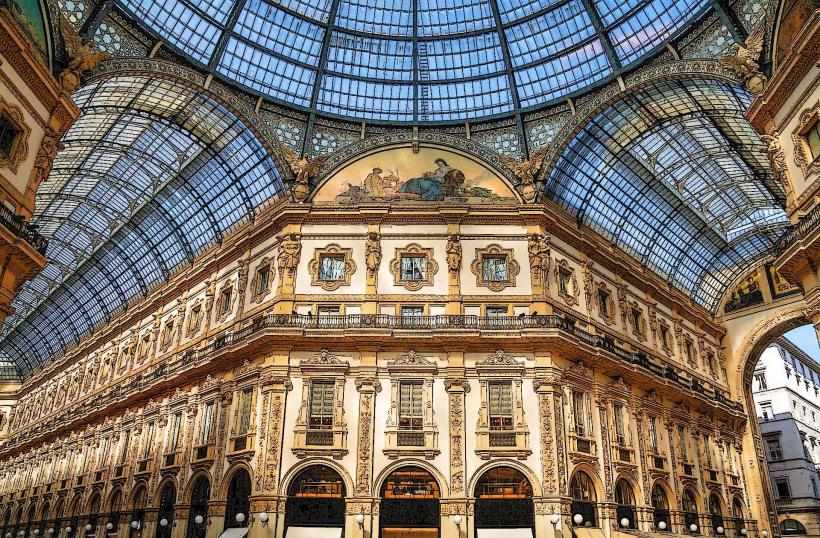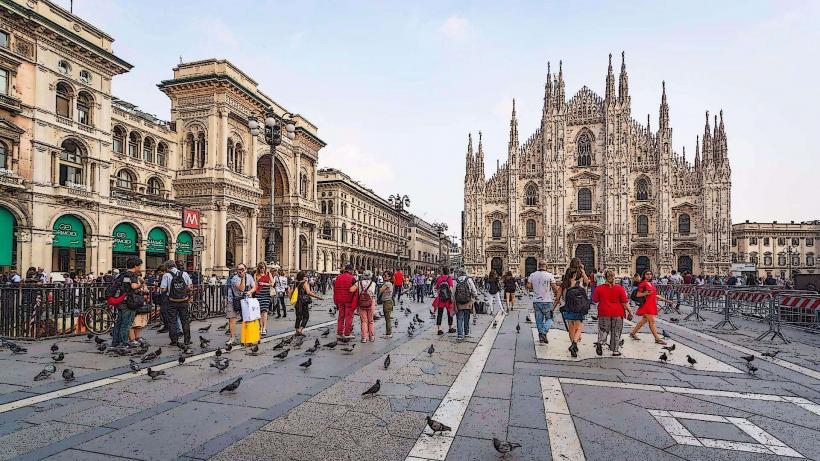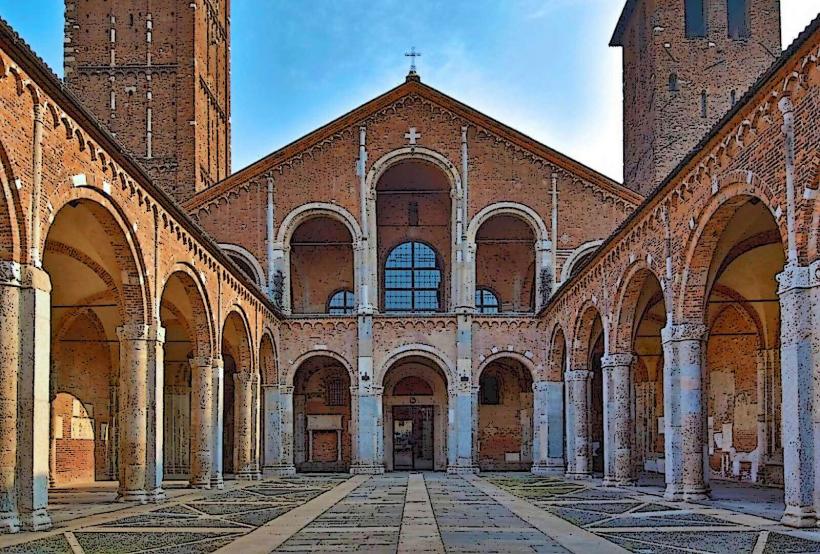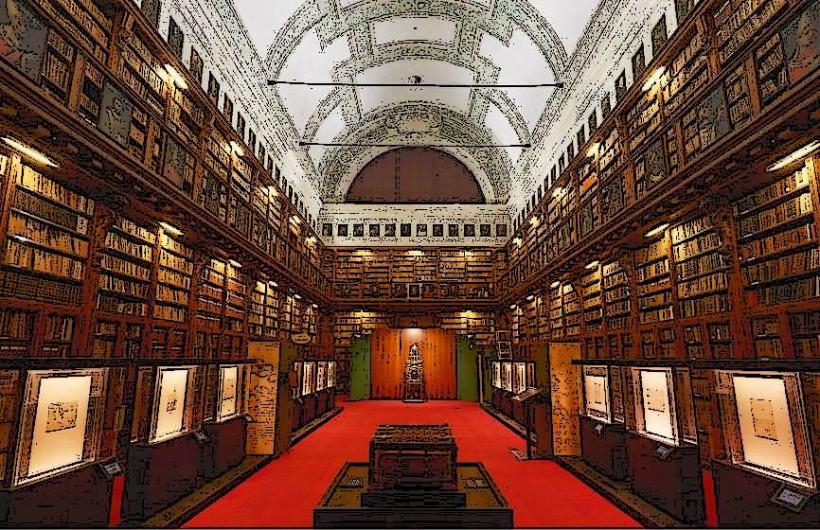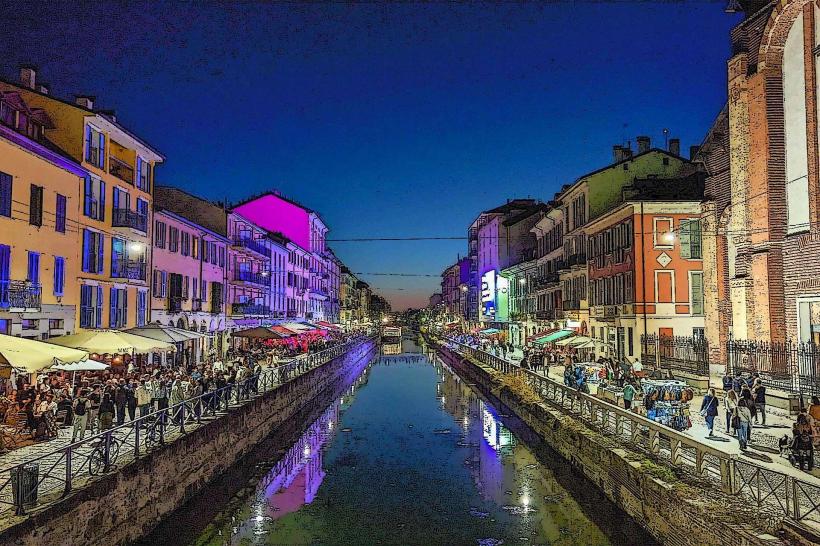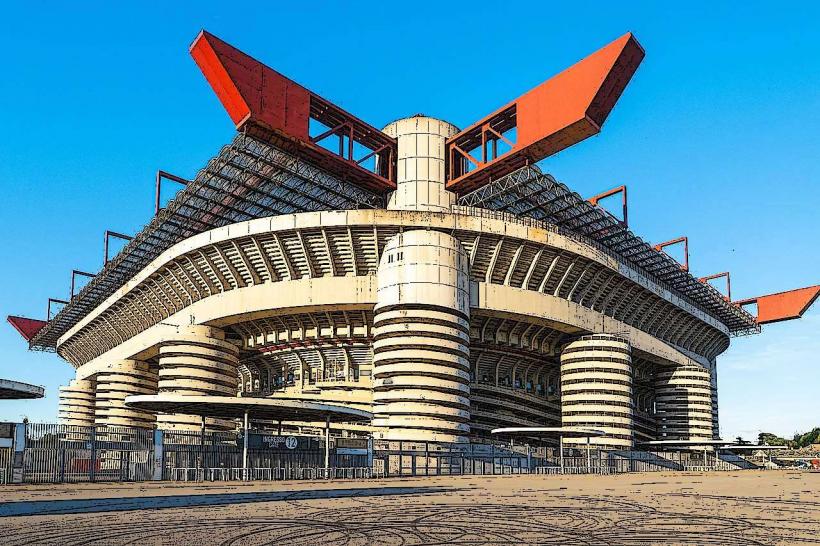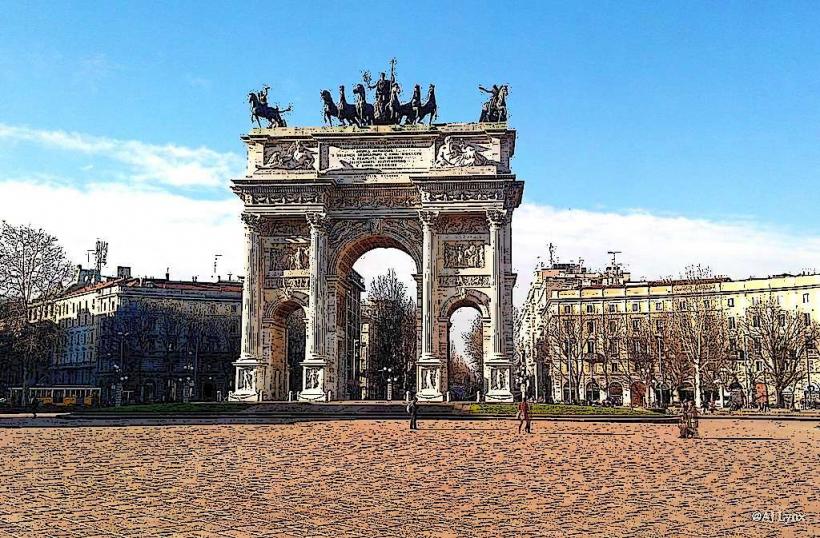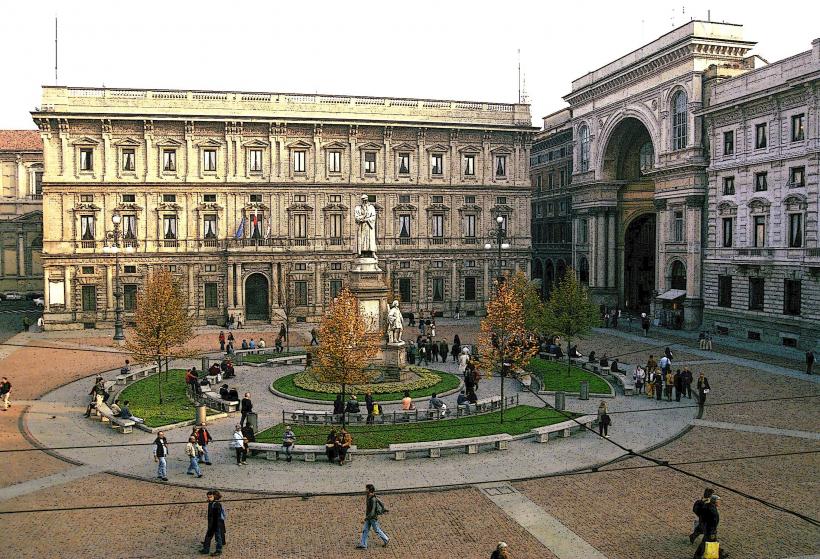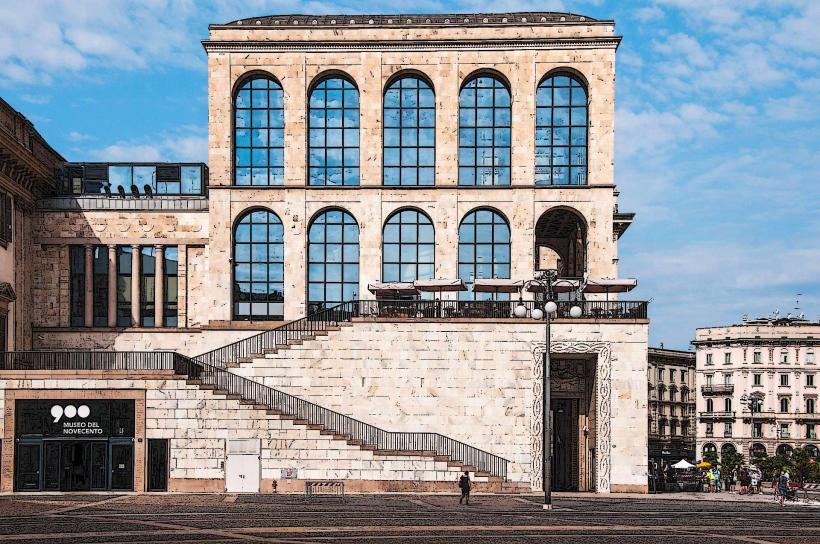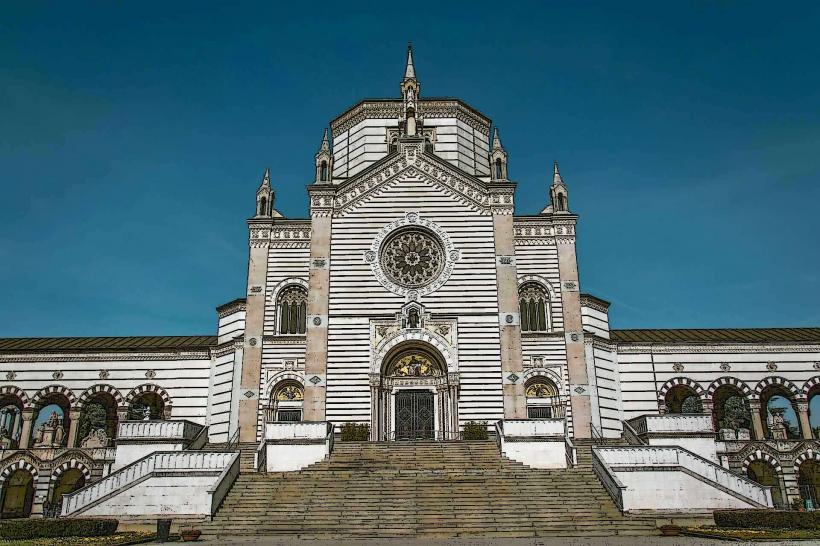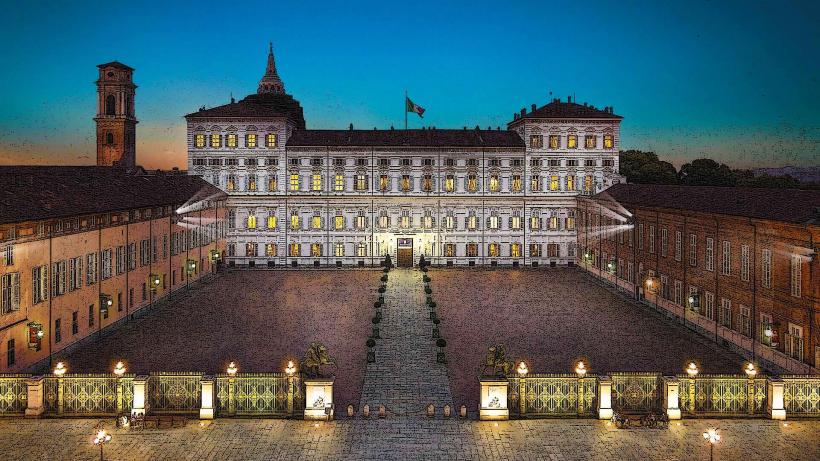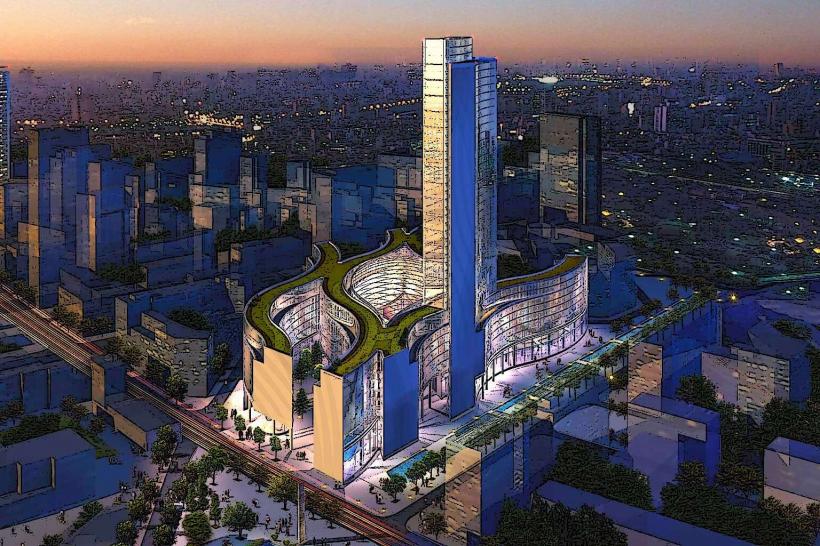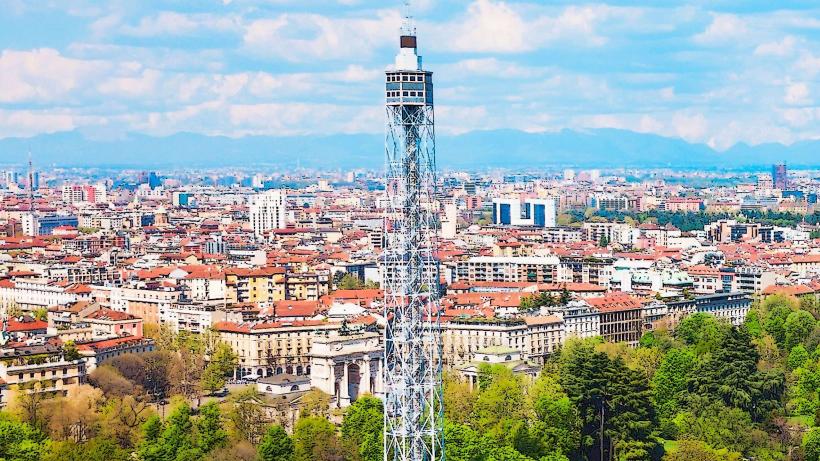Information
Landmark: La Scala Opera HouseCity: Milan
Country: Italy
Continent: Europe
The Teatro alla Scala (commonly known as La Scala) is one of the most famous and prestigious opera houses in the world, located in the heart of Milan, Italy. Renowned for its rich history, exceptional acoustics, and prominent role in the world of opera, it has become a symbol of Italian culture and artistic excellence.
1. History and Origins
- Foundation: La Scala was founded in 1778 by Empress Maria Theresa of Austria after the previous opera house, Teatro Regio Ducale, was destroyed by a fire. The new theater was built on the site of the Church of Santa Maria alla Scala, which is where the name “La Scala” comes from.
- Construction: The opera house was designed by architect Giovanni Piermarini, and construction began in 1776. It was completed in 1778, and the theater opened its doors to the public on August 3, 1778 with a performance of "Europa riconosciuta" by Antonio Salieri.
- Renovations: Over the years, La Scala has undergone several renovations, including major restorations in the late 19th century and after World War II when it was bombed. The most recent major renovation was completed in 2004 to modernize the theater while preserving its historic charm.
2. Architectural Features
- Exterior Design: The building is designed in a neoclassical style, with a simple but grand façade featuring Doric columns. The exterior is relatively understated, focusing attention on the elegance of the interior rather than the exterior grandeur.
- Interior: The interior of La Scala is magnificent, with a capacity of over 2,000 seats arranged in a horseshoe shape, providing excellent views of the stage from almost every angle. The seating includes boxes, balconies, and the orchestra pit.
- Auditorium: The auditorium's design is renowned for its exceptional acoustics, which have been perfected over time and are considered among the best in the world for opera performances. The warm, resonant sound is the result of meticulous design and the use of traditional materials.
- Stage and Scenery: La Scala’s stage is one of the largest in the world, allowing for elaborate sets and stage productions. It is equipped with the latest technology, allowing for a variety of stage effects and a seamless experience for audiences.
- Ceiling and Decorations: The ceiling frescoes, created by Giuseppe Rillosi, depict the allegory of "The Glory of the Arts." The theater also features luxurious red velvet, gilded decorations, and crystal chandeliers that add to the opulent feel of the venue.
3. Cultural Significance
- Opera History: Since its opening, La Scala has been the venue for the first performances of many operatic masterpieces by composers such as Giuseppe Verdi, Giacomo Puccini, Vincenzo Bellini, and Gioachino Rossini. Verdi's works, in particular, are strongly associated with La Scala, and the theater was central to his career.
- World-Famous Performances: La Scala has hosted numerous world premieres of important operas, such as Verdi’s "Oberto" (1839) and "La Traviata" (1853). It is also the venue for premiering new productions by contemporary composers and directors.
- Cultural Hub: Beyond opera, La Scala plays a pivotal role in Milanese and Italian culture. It is the city's premier venue for classical music and also hosts ballet performances, concerts, and events that attract the world’s leading artists and performers.
- Annual Season: The opera house’s annual season traditionally begins on December 7th with a performance dedicated to the feast of Saint Ambrose, Milan’s patron saint. This performance is one of the most prestigious events on the international cultural calendar.
4. Notable Features and Landmarks
- The Auditorium: As one of the world’s most celebrated auditoriums, La Scala’s acoustics are famous for their clarity and resonance. The theater's design ensures that the audience feels deeply connected to the performance, whether seated in the box seats or the upper balconies.
- The Museum of La Scala: The Museo Teatrale alla Scala is housed in the same building as the opera house and showcases an impressive collection of historical objects related to the theater’s history, including costumes, scenic models, manuscripts, and portraits of composers and singers associated with La Scala.
- Foyer and Hallways: The grand foyer and hallways are adorned with elegant sculptures, paintings, and historical portraits, creating a regal atmosphere as patrons make their way to their seats.
- Galleries: The upper galleries of the opera house offer an excellent view of the stage, and the boxes are the most coveted seats in the house, providing a prestigious location for the city's aristocracy and distinguished visitors.
5. Important Performers and Conductors
- Famous Singers: Over the centuries, La Scala has hosted performances by some of the world’s most iconic operatic voices, including Maria Callas, Luciano Pavarotti, Placido Domingo, and Renata Tebaldi.
- Renowned Conductors: La Scala has also been home to performances conducted by legendary figures such as Riccardo Muti, Herbert von Karajan, and Leonard Bernstein. Its music directors and conductors are among the most respected in the classical music world.
- Famous Productions: The theater continues to be the site of groundbreaking opera productions, with renowned directors like Daniel Barenboim and Zubin Mehta having led celebrated performances at La Scala.
6. Visiting Teatro alla Scala
- Location: La Scala is located in the center of Milan, right next to Piazza della Scala and Galleria Vittorio Emanuele II, making it easily accessible for visitors.
- Public Tours: Visitors can tour La Scala during the day when there is no performance. The museum and historical exhibits provide a fascinating glimpse into the history of the opera house and its many iconic productions.
- Performance Schedule: Tickets for performances can be purchased in advance. The theater hosts regular opera seasons, ballet performances, and concerts throughout the year.
- Ticket Information: La Scala is one of the few opera houses in the world that regularly sells out its performances. It is recommended to book tickets well in advance, particularly for the most prestigious events like the December 7th opening night.
7. Legacy and Influence
- Global Reputation: La Scala is regarded as a global symbol of Italian opera and is one of the most prestigious opera houses in the world. It continues to attract opera lovers, musicians, and cultural aficionados from across the globe.
- Theater and Opera Culture: The influence of La Scala extends beyond the stage itself, contributing to the development of opera as an art form and shaping the traditions of opera houses worldwide.
8. Conclusion
The Teatro alla Scala is not only a theater but a cultural landmark of Milan and Italy, embodying the country’s deep artistic heritage. With its history of iconic performances, stunning architecture, and global reputation, La Scala remains a pillar of the world of opera and continues to inspire generations of performers and audiences alike. For anyone visiting Milan, experiencing a performance at La Scala is an unforgettable cultural experience.

